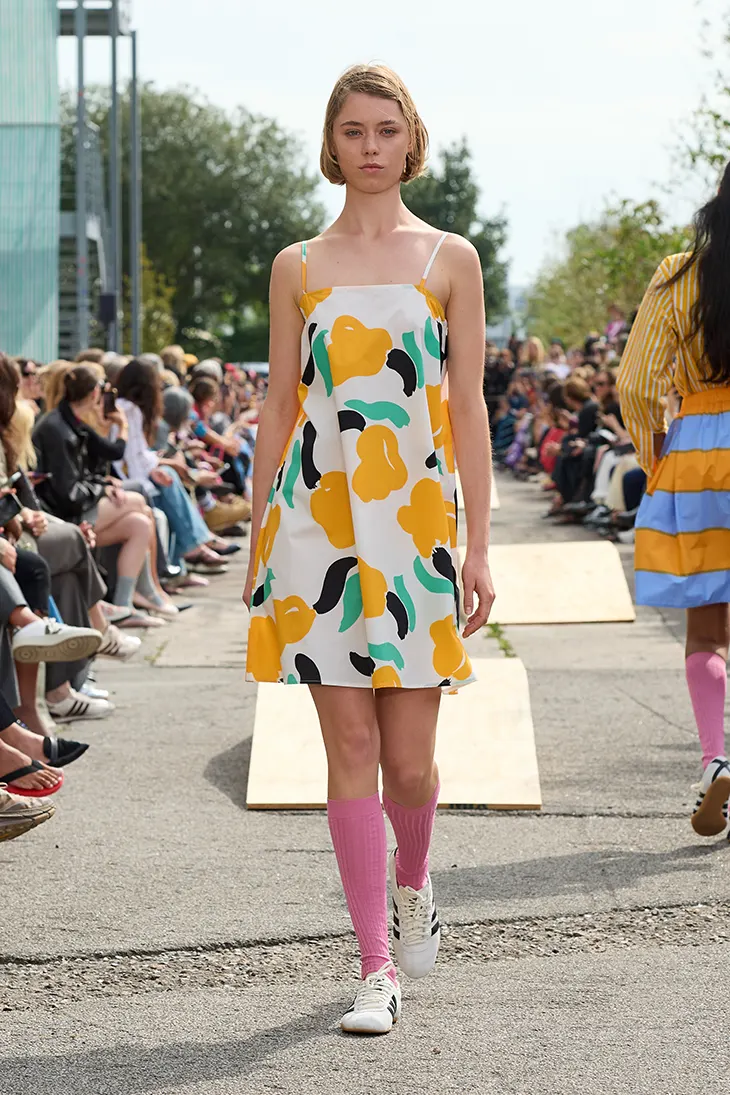
Marimekko presented its Spring Summer 2026 collection at Copenhagen Fashion Week inside a former industrial site located in the city’s harbor. The space, once defined by heavy machinery and production, now hosted a show centered on rhythm, composition, and color. The collection drew inspiration from traditional printmaking and used this reference to explore both structure and repetition in design.
The runway featured Marimekko’s bold visual identity across a sequence of looks that paired familiar shapes with refreshed color stories. Set to an industrial soundscape recorded at the brand’s textile factory in Helsinki and mixed by Finnish artist YSI, the show focused on movement and texture. The sound carried echoes of printing machines, aligning with the garments’ overlapping patterns and layered construction.
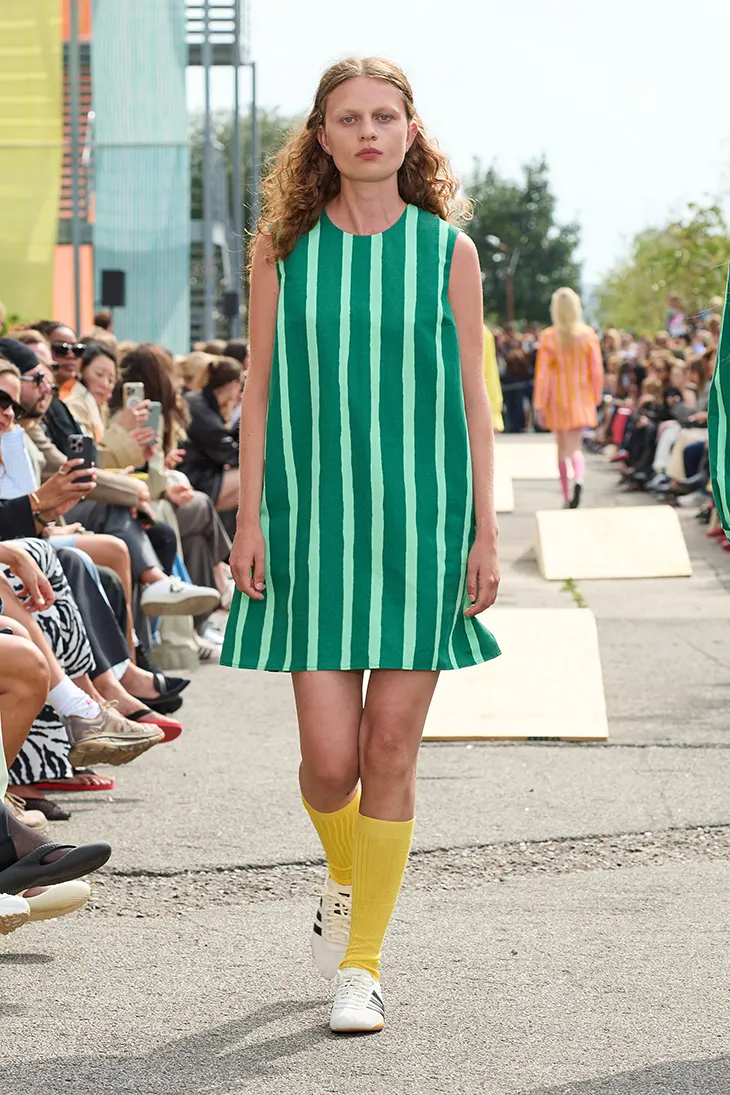
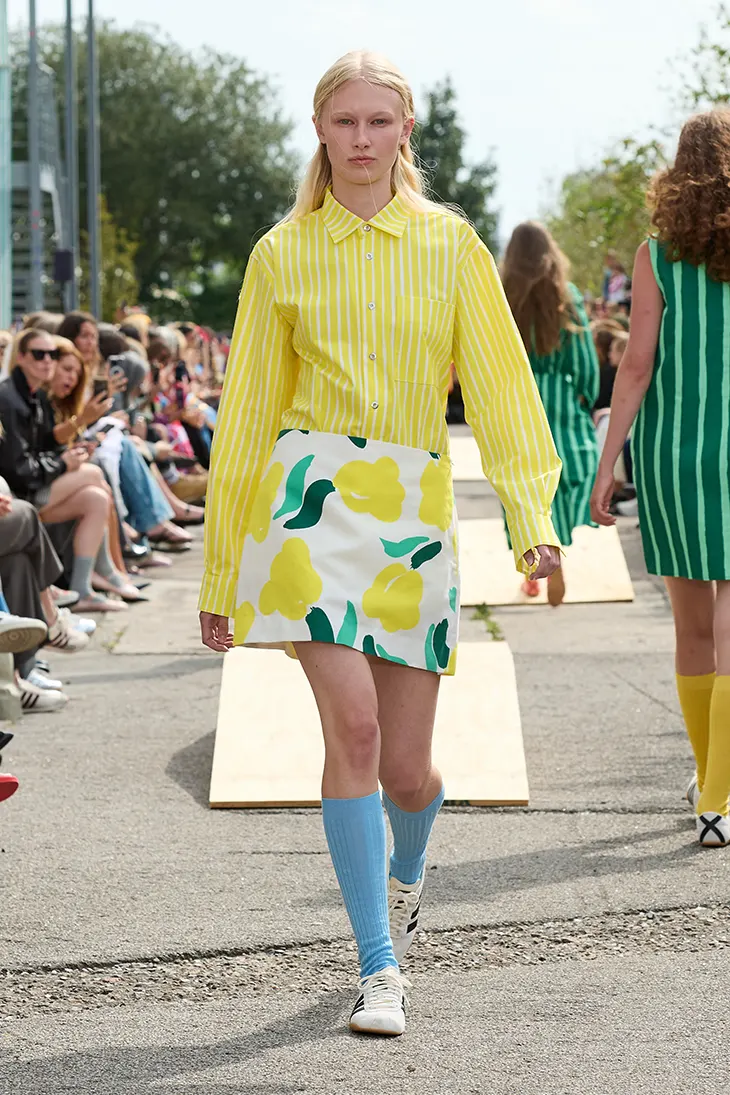
Each silhouette played with contrast in size and rhythm. Long hems met cropped separates, while soft florals intersected with crisp stripes. Prints changed scale from one look to the next, creating a visual tempo that matched the mechanical pulse of the soundtrack. The styling added another element of control and disruption, as each outfit came paired with contrasting adidas Tokyo shoes, grounding the collection with functional energy.
Color drove much of the narrative for Spring Summer 2026. Marimekko introduced a range that moved from soft botanicals to high-acid tones. The palette included pinks, greens, and blues alongside more saturated accents like pistachio, lemon, and peach. The chromatic pairings worked in concert with the patterns, turning familiar motifs like florals into abstract compositions. In one case, the team used color to shift a floral print into a visual field of lemons, changing the print’s reading through hue rather than shape.
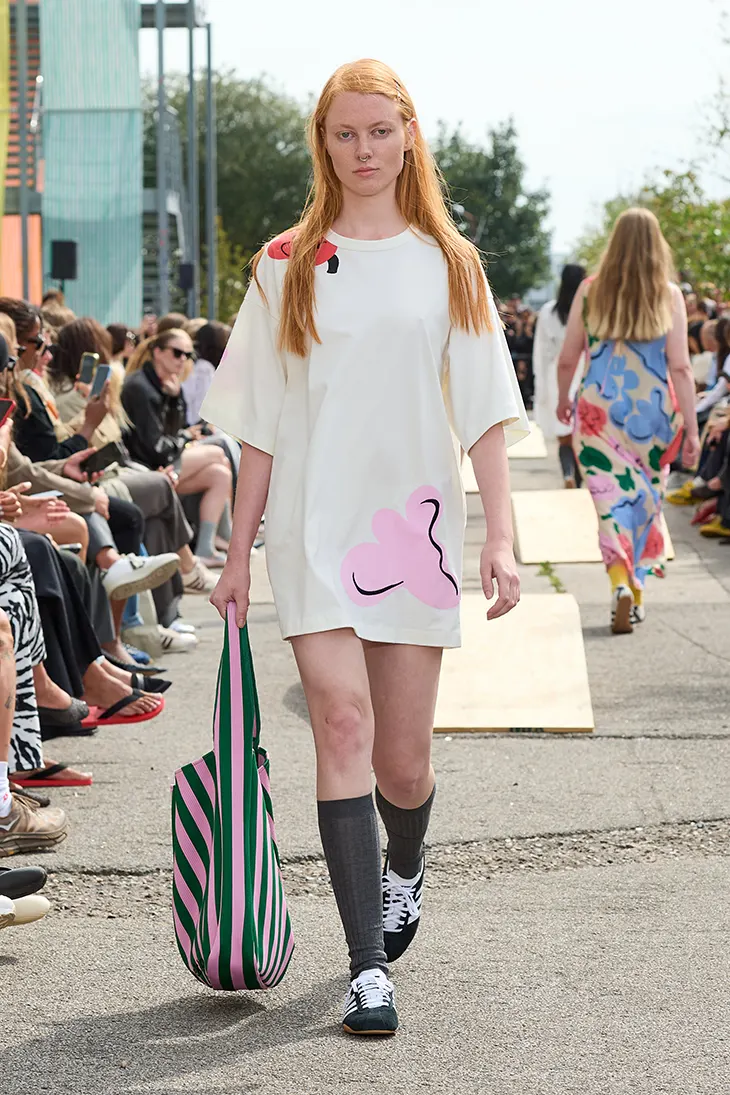
Creative Director Rebekka Bay approached the collection with a focus on reformulating existing ideas. She revisited some of Marimekko’s core silhouettes and shifted their proportions or use. One example appeared in the transformation of the Marimini dress, first introduced in the 1960s. For this collection, Bay cut the piece in two, forming a coordinated top and skirt set. The approach emphasized the idea of variation, presenting a form from the archive in a revised structure that matched the new season’s rhythm.
That principle extended to the use of prints as well. The team moved between large-scale and miniature versions of the same patterns, drawing connections between pieces without enforcing a strict uniform. The relationship between florals and stripes played a recurring role in the show. These two motifs, often used separately, appeared side by side or layered together, reinforcing the idea of balance through contrast.
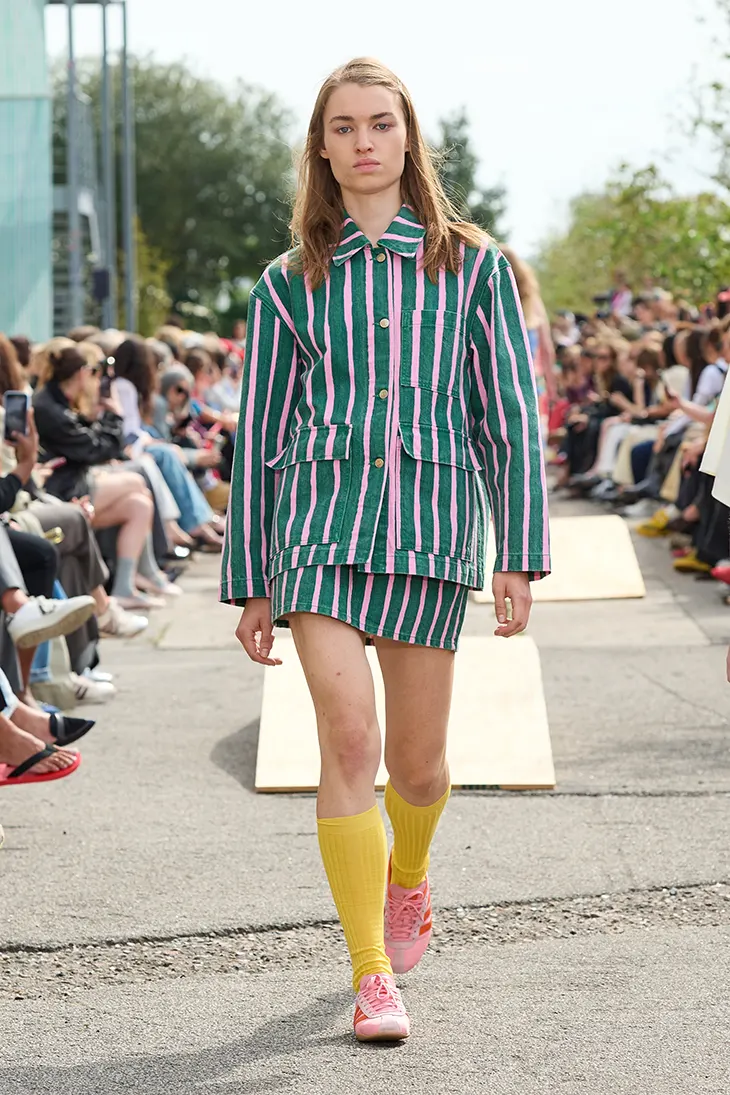
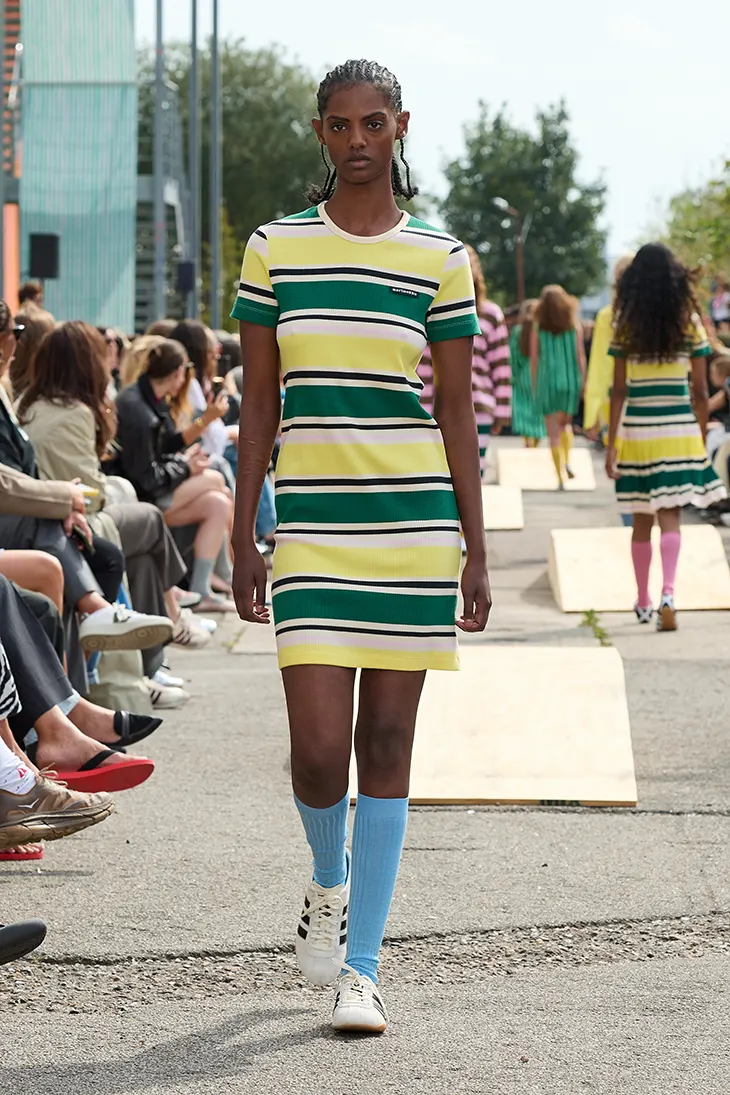
The collection also marked a milestone for one of Marimekko’s longest-standing products: the Jokapoika shirt. Designed by Vuokko Eskolin-Nurmesniemi, the shirt has remained in production since 1956 and is known for its straight fit, silver buttons, and hand-painted Piccolo stripe. To mark its 70th year, the brand reissued the shirt in its original material weight while also introducing several reinterpretations. These included cropped versions, large-scale graphics, and dresses that extended the design into new forms.
Accessories and seasonal pieces continued the Jokapoika tribute. The collection expanded the stripe motif into bags and other items, maintaining the visual language of the original while adjusting the shape and size. The Piccolo stripe, characterized by the overlap of hand-drawn brushstrokes, produced a third tone where colors intersected, a technique that returned throughout the show.
Marimekko’s Spring Summer 2026 collection worked through variation and repetition. From the repurposed venue to the industrial soundtrack and pattern-driven design, the show traced a consistent interest in rhythm and reconfiguration.
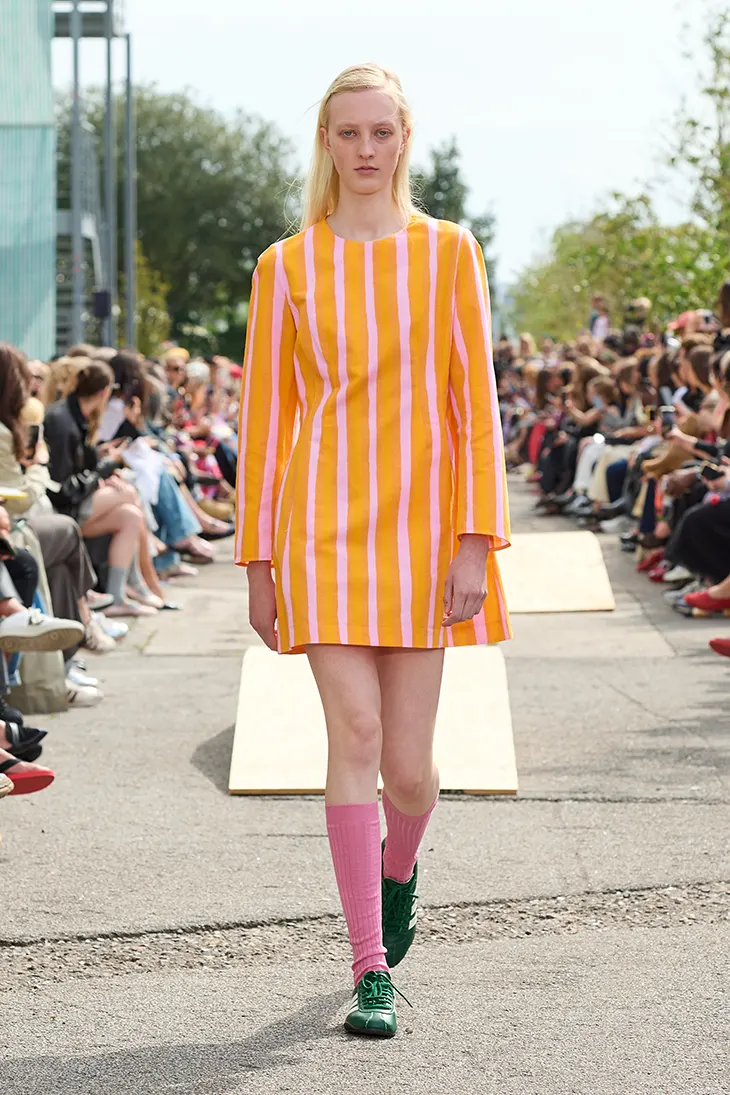
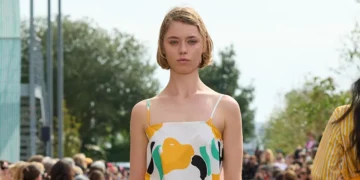













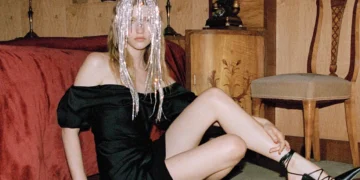

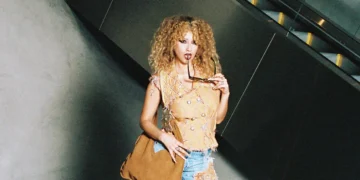
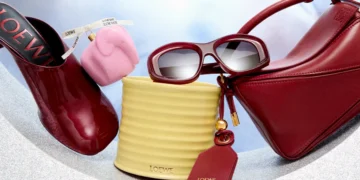


Love the patterns but guys it seriously just ends there ahaha